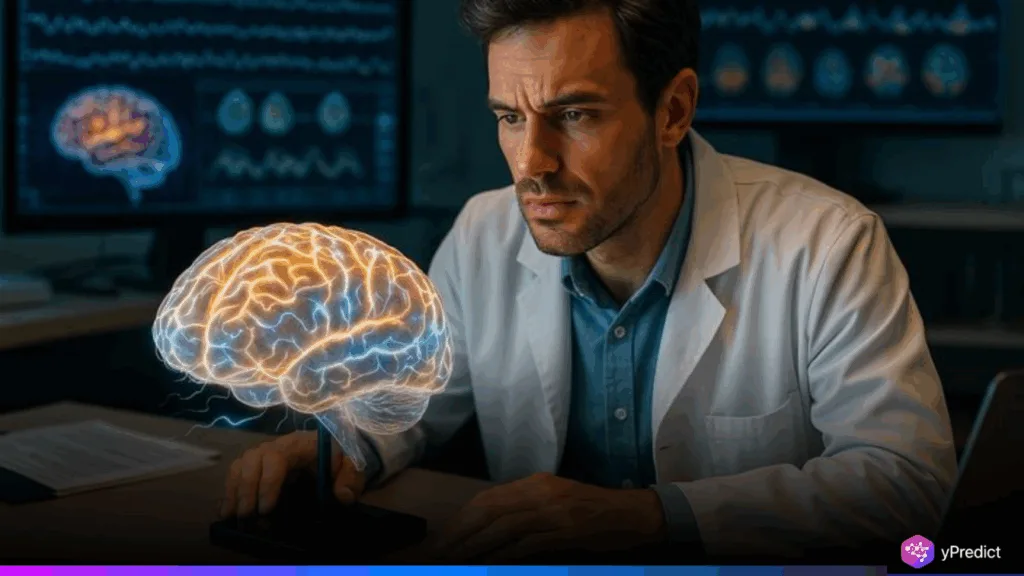
Mayo Clinic researchers have developed a groundbreaking AI tool that could reshape how dementia is diagnosed. Called StateViewer, the system interprets brain scans to detect signs of nine distinct types of dementia, including Alzheimer’s, with remarkable precision. In clinical trials, it correctly identified the disease in 88% of cases. The tool uses a common scan type, meaning it could become widely accessible, even in clinics without neurology specialists. The research, published in Neurology, shows that StateViewer more than doubles diagnostic speed and significantly improves accuracy. This innovation may offer earlier answers for millions navigating the uncertainties of cognitive decline.
How StateViewer Speeds Up and Sharpens Brain Imaging Workflows
Dementia diagnosis often involves multiple tests, referrals, and long wait times. Even then, reaching a clear conclusion is difficult. StateViewer simplifies this by analyzing a single PET scan, tracking how the brain uses glucose, which reflects neurological activity. The software compares patient scans to a vast database of cases with confirmed diagnoses. It then highlights patterns linked to different conditions, such as Alzheimer’s, Lewy body dementia, or frontotemporal disorders. These differences are made visible through intuitive, color-coded brain maps. Clinicians, regardless of their specialty, can use this visualization to understand what’s happening in the brain.
This implies that precise decisions may be arrived at in a shorter time, even within half the normal time. Arrived at by Mayo neurologist Dr. David Jones and AI master Dr. Leland Barnard, the instrument demonstrates a powerful combination of both clinical wisdom and technical expertise. It is not only the time efficiency of this, but the fact that it makes a complicated task clear. In areas where neurologists are few, such a gadget can be the deciding factor between late or early treatment. And with an increasing number of treatments for people with dementia, it becomes not only advantageous but also more essential to diagnose early.
Bringing AI-Powered Diagnosis to the Global Dementia Crisis
Dementia affects tens of millions worldwide, and new cases keep rising. Alzheimer’s is now among the leading causes of death. Yet in many places, proper diagnosis remains out of reach. This is where StateViewer stands out. It’s built to run on a type of scan already in use around the world, making it scalable and practical. By embedding AI into the diagnostic process, it allows clinicians, even those outside of neurology, to spot disease patterns that might otherwise be missed. Dr. Barnard, who led the tool’s development, explained that the project was guided by one principle: making sure real patients benefit from every line of code.
“This wasn’t about abstract data; it was about people searching for answers,” he said. Importantly, StateViewer is transparent. It doesn’t just give an answer; it shows how it got there, using visual maps to explain its reasoning. That kind of clarity helps doctors make better decisions and builds trust with patients and families. With Mayo Clinic still in the process of testing the system in various environments, there is the possibility that it will become a new standard of offering dementia services to patients at a faster and more reliable rate in areas of most urgent need.
A Glimpse Into AI’s Role in the Future of Neurology
Tools like StateViewer hint at a new era in brain health care. With the help of an AI tool, clinicians can now detect disease earlier, treat it more precisely, and give patients answers they desperately need. Mayo Clinic’s continued research will expand how and where the tool is used. Eventually, it is possible to reduce the disparity between urban and rural care, as well as between early symptoms and the correct treatment. Artificial intelligence-based diagnostics can replace humans soon, as the entire world faces an increasing tidal wave of dementia cases.






